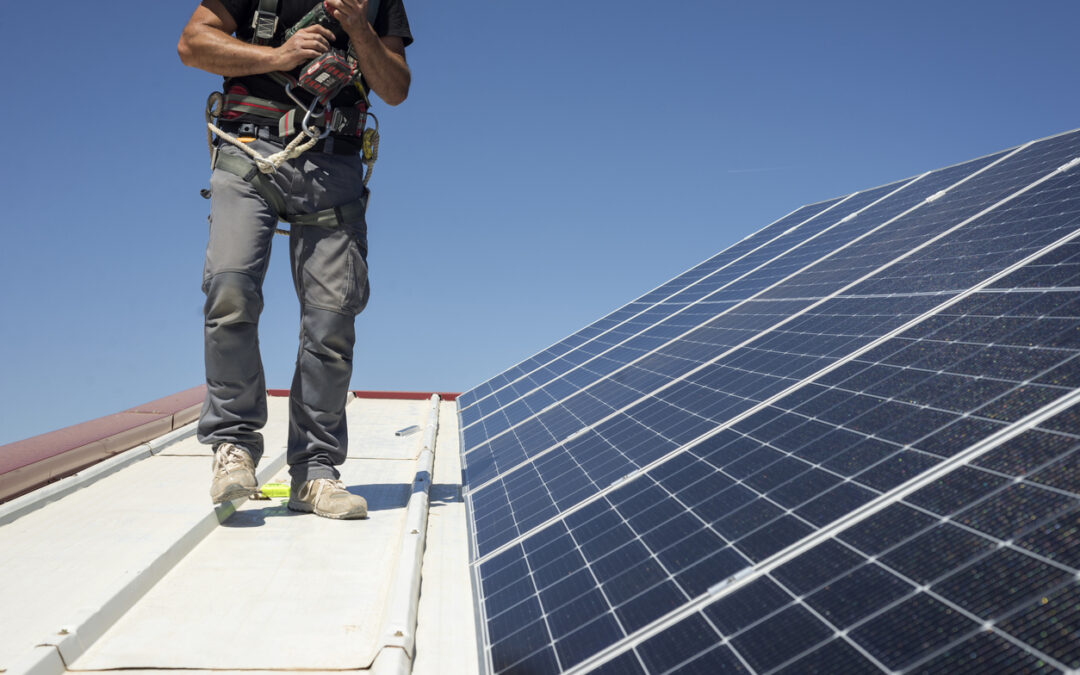As small businesses strive to reduce operational costs and enhance sustainability, solar energy has emerged as a highly attractive option. However, many business owners may feel uncertain about the process of installing solar panels. Understanding the steps involved can help demystify the process and highlight the benefits of making this transition. This blog will walk you through the solar installation process for small businesses, providing a comprehensive guide on what to expect at each stage.
Initial Consultation and Site Assessment
The solar installation process for small businesses begins with an initial consultation with a reputable solar panel provider. During this meeting, the provider discusses your energy needs, budget, and goals for the project. This information helps tailor a solution that meets your specific requirements. Following the consultation, the provider conducts a thorough site assessment to evaluate the suitability of your property for solar panel installation. This assessment includes inspecting the roof’s structural integrity, evaluating the roof’s orientation and potential shading, and assessing the existing electrical system for compatibility with the new solar installation.
System Design and Proposal
After the site assessment, the solar provider designs a customized commercial solar energy system for your business. The design includes the layout of the solar panels, the type of panels and inverters to be used, and any additional components required for optimal performance. The provider calculates the expected energy production and savings based on the system design, helping you understand the financial benefits and potential return on investment. You will receive a detailed proposal outlining the project scope, costs, expected energy savings, and potential return on investment. The proposal will also include information on available incentives, tax credits, and financing options to help reduce the upfront costs.
Financing and Incentives
Financing the installation of solar panels can be a significant consideration for small businesses. Fortunately, various financial incentives and financing options are available to make the transition more affordable. The federal Investment Tax Credit (ITC) allows businesses to deduct a significant portion of the cost of installing solar panels from their federal taxes, covering 26% of the installation cost as of 2021. Additionally, many states, including Minnesota, offer additional incentives and rebates to support solar energy adoption, such as the Minnesota Solar Energy Incentive Program (SEIP), which provides rebates that can significantly reduce upfront costs. Solar providers often offer financing options such as solar loans, leases, and Power Purchase Agreements (PPAs), which can help businesses finance their solar installations with minimal upfront costs.
Permitting and Approvals
Before installation can begin, it is necessary to obtain the required permits and approvals. This step involves acquiring building and electrical permits from local authorities and coordinating with the local utility company to connect the solar system to the grid and set up net metering, which allows businesses to sell excess energy back to the utility. The solar provider typically handles all the paperwork and regulatory requirements, ensuring compliance with local, state, and federal regulations.
Installation
With permits and approvals in place, the installation phase can begin. The installation process for small businesses involves several key steps. First, the installation site is cleared and prepared. Then, mounting structures that will support the solar panels are installed. These can be ground-mounted systems for large open areas or roof-mounted systems for buildings and structures. Next, the solar panels are secured to the mounting structures, and the electrical work is carried out to connect the solar panels to inverters and integrate the system with the business’s electrical infrastructure. Finally, thorough testing is conducted to ensure everything is functioning correctly and safely.
Commissioning and Grid Connection
After installation is complete, the solar system must be commissioned and connected to the grid. This involves conducting a final inspection to ensure the system complies with all building codes and safety regulations. The utility company then coordinates the connection of the system to the grid and installs a bi-directional meter that tracks both energy consumption and production.
Monitoring and Maintenance
Once the system is operational, ongoing monitoring and maintenance are essential to ensure optimal performance. Many solar providers offer monitoring services that allow business owners to track energy production in real-time. Regular maintenance, such as cleaning the panels, checking for damage, and ensuring all components are functioning correctly, is crucial to maintain efficiency and prolong the system’s lifespan.
Benefits of Solar Panels for Small Businesses
Switching to solar energy offers numerous benefits for small businesses. By generating your own electricity, you can significantly reduce your energy bills, which can have a substantial impact on your bottom line. Solar panels provide a reliable and independent source of energy, reducing your dependence on the grid and protecting against energy price fluctuations. Adopting solar energy also demonstrates your commitment to sustainability and environmental responsibility, which can enhance your brand image and appeal to eco-conscious customers. Taking advantage of federal, state, and local incentives can make the transition to solar energy more affordable and improve the return on investment.
A Smooth Transition to Solar
The solar installation process for small businesses involves several well-coordinated steps, from initial consultation and site assessment to installation and commissioning. Understanding what to expect at each stage can help business owners make informed decisions and ensure a smooth transition to solar energy. The benefits of solar panels for small businesses are substantial, including significant cost savings, enhanced energy independence, and a reduced environmental footprint.
By partnering with a reputable solar provider like Cedar Creek Energy, small businesses can successfully navigate the solar installation process and enjoy the long-term benefits of renewable energy. If you’re considering making the switch to solar energy, contact Cedar Creek Energy today to learn more about how we can help you achieve your energy goals.

